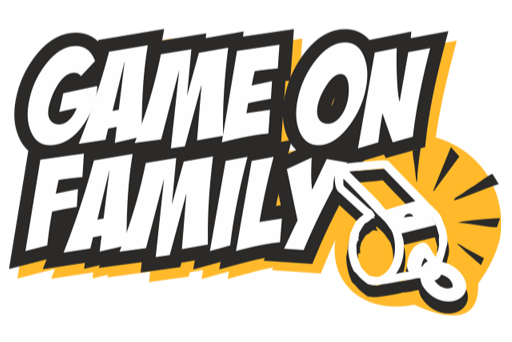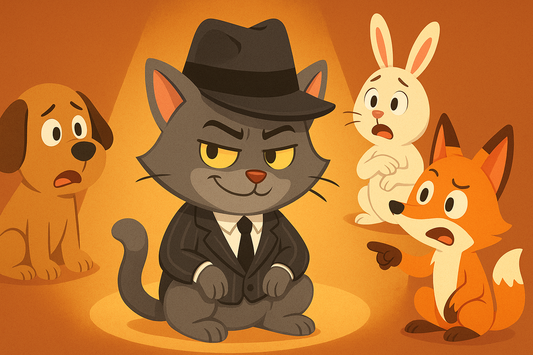
How to Play Seven Up - The Classic Classroom Game that's so easy!
Share
What is the “Heads Up, 7 Up” game?
Heads Up, Seven Up is a popular classroom game where students try to guess who secretly selected them while their heads were down. Students use deductive reasoning, listening skills, and intuition to make an informed guess who picked them. Also known as “Seven Up,” “Thumbs Up,” Heads Down, Thumbs Up,” or “Heads Down,” the game has been played in the U.S. since at least the 1950s. If it can survive over half a century, it’s worth giving it a try!
Objective
The goal of the guesser is to correctly identify which of the seven pickers selected them. The goal of the picker is to avoid being identified.
What you need
Classroom with desks or tables (or at home with tables or countertops).
Number of Players
Seven up is usually a classroom game and is ideally played with 15+ players, in the following roles:
- 7 pickers (they’re the “7 up”)
- 7+ potential guessers
- 1 teacher/facilitator
If you have fewer than 15 players, you can adjust the number of pickers to be at least 1 fewer than half the total.
Playing Time
Each round takes about 5 minutes. Usually 3-6 rounds are played, so plan on 15-30 minutes for the whole game.
Age
All ages, but typically played by upper elementary school age children through junior high school (3rd-8th).
Skills
- Social skills: 7 up is often used as a classroom icebreaker. Kids interact with each other and practice communication skills, taking turns, and following rules.
- Critical Thinking: The guessors must use intuition, logic, and deductive reasoning to identify who chose them.
- Stealth and body awareness: The pickers must walk quietly to not give away their identity.
- Mindfulness: All players stay in the moment while they focus and listen for clues.
Why we like heads up 7 up for kids and students
- Fun Icebreaker: It’s fun to be sneaky, to choose, and to guess who picked you.
- Simple rules: The rules are easy enough to learn and play quickly.
- Moving around the class: The pickers will get up and move around the class.
- Getting focused: This is a good way to take a break where kids focus on the game, then refocus on class.
How to play Heads Up 7 Up
1: Gather 15 or more players in a classroom or other playing area
You’ll need 15 or more players for the traditional game: 7 pickers (they’re the “7 up”), 7+ other players (7 will become “guessers”) and one facilitator (usually a teacher, but it can also be a student). See the “Variations” section below for how to play with fewer players. Heads Up Seven Up is typically a classroom game, but it can be played at home as well. Classrooms work particularly well because students already have desks or table space for all the players.
2: Designate a facilitator
One player, usually a teacher, is designated as the facilitator of the game.
3: Choose 7 “Pickers”
The facilitator will choose the seven pickers. Alternatively, the facilitator chooses the first picker and then each picker chooses an additional picker until there are 7 of them total.
4: Announce the picking phase with “Heads down, thumbs up, time to play seven up”
The facilitator will instruct the picking phase by announcing the rhyme: “heads down, thumbs up, time to play seven up.” All of the players besides the pickers put their heads down on their arms on the table and close their eyes. The facilitator can also turn off or dim the light to make it harder for players to cheat and see the pickers.
5: Pick “guessers” by touching their thumbs
Once everyone at the desks has their heads down and thumbs up, the pickers will each select one person, by touching their “thumbs up” thumb. The pickers’ goal is to make their selection in a stealthy way that does not give away their identity and then return to the front of the room. Guessers should pay attention to clues that will help them identify their picker, such as footsteps.
6: Begin the guessing phase
Once all 7 pickers have selected a guesser and returned to the front of the room, the facilitator will announce “heads up, seven up” and everyone who had their eyes closed takes their heads off the table and opens their eyes. All of the people who were picked as guessers stand up. Each guesser gets one attempt to identify the person who picked them. If they guess correctly, they’re a picker for the next round and the current pickers sit down. If they guess incorrectly, they sit back down and the picker stays “it” as a picker in the next round.
7: Play the next rounds
Subsequent rounds are played in the same way. Pickers should make an attempt to choose players who haven’t yet been a picker so that everyone gets a chance to play both roles.
Heads up, Seven Up video tutorial
Heads Up, 7 Up Rules
- Each picker chooses 1 person (see variations below for more options)
- All heads-down players must keep their eyes closed. No cheating and looking at feet!
- Each guesser gets one chance to identify their picker. If they are successful, they swap positions with the picker for the next round. If they are unsuccessful, the existing picker continues for another round.
7 up Variations
- Fewer players: You can adjust down if less than 14 people. There just always needs to be at least as many players in the audience as there are pickers. 7 total people would be as low as you’d want to go (3 pickers, 3 other/guessers, and 1 facilitator).
- More players: If you have more than 25 players, consider splitting into 2 groups so the more people get turns. Or you can allow the picker to select up to 3 guessers per turn.
7 up FAQs
Why is it called heads up seven up?
The “seven up” in “heads up seven up” gets its name because there are seven players up at the front of the room who are the “pickers” in the game who choose seven “guessers” during play. The “heads up” in “heads up seven up” is because most of the players have their heads down for part of the game until they are given the instruction to raise their head with the phrase “heads up seven up” and all players put their heads up and the selected players stand up.
How do you win at 7 up?
Heads Up, Seven Up often requires guesswork, but it can be informed guessing. Here are some strategies to help you win:
- Sensory clues: Pay close attention when your head is down. Do you notice anything identifiable when the picker approaches you? Their footsteps, the way they touch your thumb, their smell, etc
- Deductive reasoning: If you’re guessing after other people have already guessed, you have an advantage. If someone has guessed correctly, you have fewer people to pick from. And if they guessed incorrectly, the player they guessed is more likely to be your picker!
- Intuition / Gut reaction: Who do you think would pick you? Maybe a friend. Or maybe something who thinks you’d never guess them. Does anyone look guilty up front when it’s your turn to pick?
The most common “cheat” to win is to have your eyes open with your head down and identify the shoes of the picker. But don’t do it! What’s the point of cheating to win?!!!







